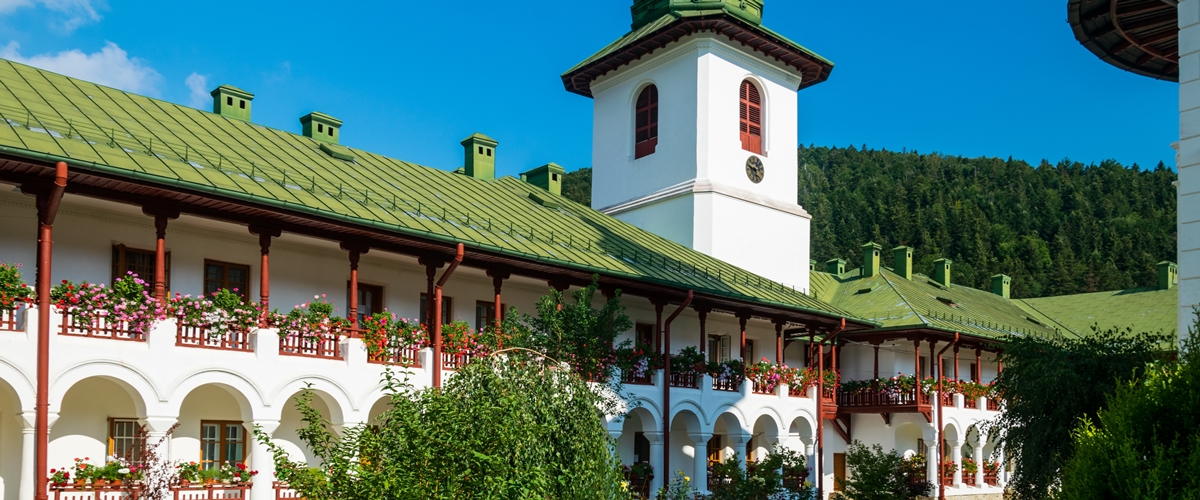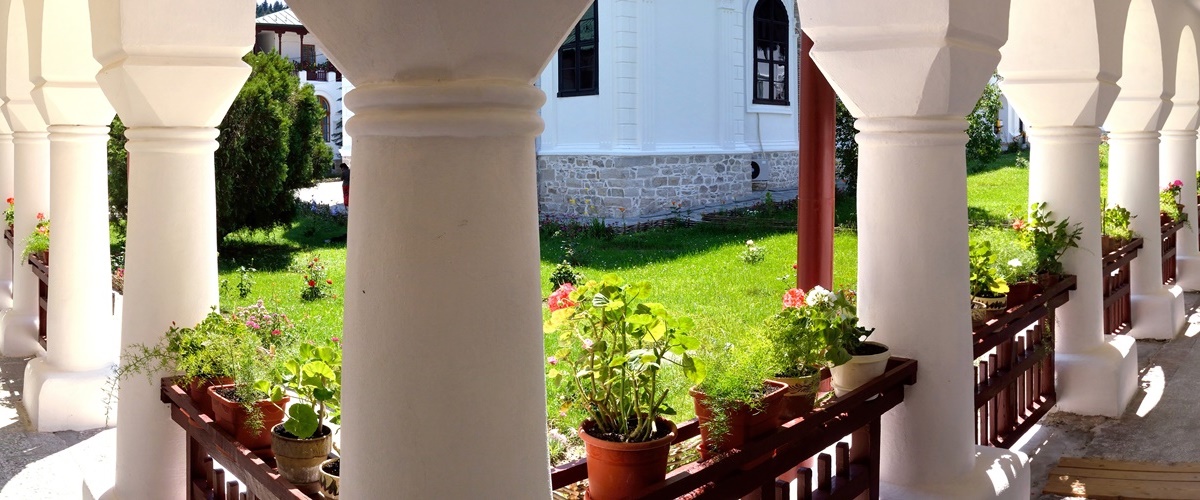Agapia Monastery
Romania's Agapia Monastery, an Orthodox nunnery, is situated 9 km from Targu Neamt in the valley of the Agapia stream. It is only three kilometres from the Neamt County village of Agapia and located in the heart of a forest. With 300 - 400 nuns, it is one of the biggest nunneries in Romania and, after Varatec Monastery, is the largest monastery by population.
The monastery was built between 1641 and 1643. The architecture of the church has no specific style. The frescoes Nicolae Grigorescu painted between 1858 and 1861 are what offer this monument its special significance.
The history of Agapia Veche, also known as Agapia on the hill, and Agapia Monastery are connected. The name Agapia comes from the monk Agapie who was a monk in the clearing where the monastery Agapia Veche situated now. After 1600, some monks remained here and built a wooden church because the monastery on the hill was difficult to access.
The invasions of the Turks and Tatars in 1671-1672 had disastrous consequences for the monastery. The monastery was left empty on several occasions when the monks felt obligated to find refuge among the mountains or to cross them into Transylvania.
Agapia had a convent of monks until the start of the nineteenth century. After the monastery became a convent of nuns, a school for nuns was built where they could learn psaltery, Greek, and the art of needlework and weaving.
Theological Monastic Seminary "Sfanta Cuvioasa Parascheva", founded under the authority of Patriarch Justinian Marina, is the only girls' seminary in the Moldavian territory and is located next to Agapia Monastery.
Outside the wall, there are two wooden churches and more than 100 monastic buildings constructed in the form of mountain houses.
The interior of the church of Agapia Monastery was painted by famous Romanian artist Nicolae Grigorescu, giving it notoriety.
Large-scale restoration work started in 1995 and was finished in the early months of 2009. The original Nicolae Grigorescu murals have received a lot of attention and have been renovated. After these renovations were finished, a monument of major significance to Romanian culture was successfully brought back onto the tourist and ecumenical circuit.





.png)




